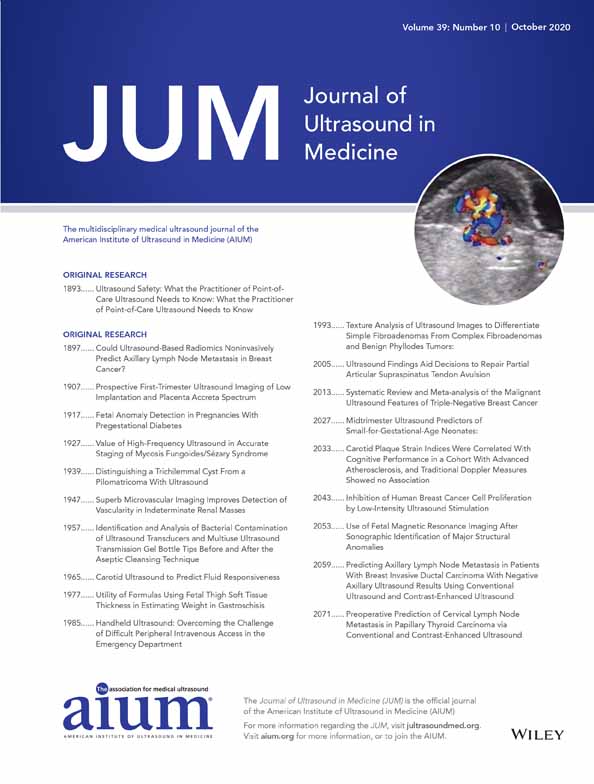Preoperative Prediction of Cervical Lymph Node Metastasis in Papillary Thyroid Carcinoma via Conventional and Contrast-Enhanced Ultrasound
Abstract
Objectives
To investigate the independent risk factors for cervical lymph node metastasis (CLNM) in patients with papillary thyroid carcinoma (PTC) and establish a prediction model via conventional ultrasound (US) and contrast-enhanced ultrasound (CEUS).
Methods
A total of 275 patients with single PTC, who were admitted to our hospital from January 2016 to December 2018, were enrolled in this study. The clinical characteristics and features of the tumor on conventional US and CEUS were retrospectively analyzed. A binary logistic regression model was established, and the diagnostic efficacy of conventional US and CEUS was compared.
Results
The binary logistic regression analysis showed that age younger than 38 years, size of 10.0 mm or greater, solid composition, peak of the nodule interior of 28.3750 or greater, and area under the curve (AUC) of the peripheral ring of less than 3.2500 were independent risk factors of CLNM (P < .05, for all). Prediction model: Logit (p) = −4.135 + 1.040 (age) + 1.920 (size) + 1.769 (composition) + 1.230 (peak of nodule interior) + 0.812 (AUC of peripheral ring). The model positively predicted CLNM at a value of L > −0.199. The AUC, sensitivity, and negative predictive value of the receiver operating characteristic curve for the model were 0.727, 71.7%, and 75.2%, respectively, which were significantly higher than those of conventional US (Z = −2.403; P = .016; Z = −5.330; P < .001; and Z = −2.390; P = .017). The specificity of the model was 73.7%, which was lower than that of conventional US (Z = 3.508; P < .001).
Conclusions
The preoperative prediction model established via conventional US and CEUS may be helpful to evaluate CLNM in patients with PTC and determine the appropriate treatment options.




